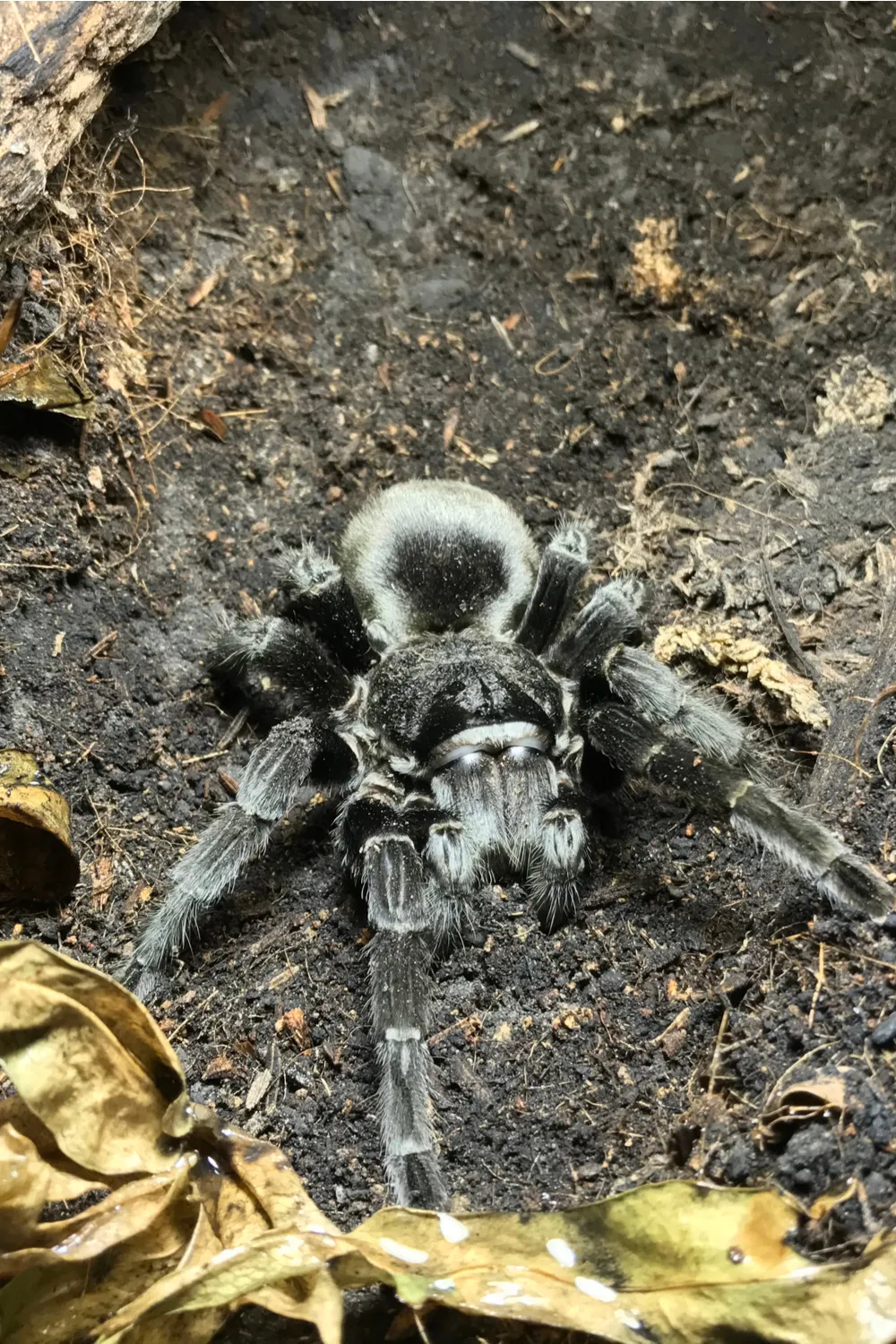Brazilian Black Tarantula: Overview
The Brazilian Black Tarantula (Grammostola pulchra) is a captivating arachnid, sought after by both novice and experienced tarantula keepers. Known for its striking appearance and relatively docile temperament, this species has gained popularity as a fascinating pet. This article will delve into the top 5 facts about the Brazilian Black Tarantula, providing an in-depth look at its origins, characteristics, behavior, and care requirements. Understanding these aspects is essential for anyone considering bringing this remarkable creature into their home. From its native habitat to its unique molting process, we’ll explore everything you need to know about this amazing tarantula, ensuring you have the knowledge necessary to appreciate and care for it properly. Get ready to discover the secrets of the Brazilian Black Tarantula and learn why it’s a favorite among tarantula enthusiasts.
Origin and Habitat
The Brazilian Black Tarantula is native to the grasslands and forests of Southern Brazil, particularly in the states of Rio Grande do Sul, Santa Catarina, and Paraná. Its natural habitat consists of a diverse range of environments, including open fields, savannahs, and lightly wooded areas. These tarantulas are terrestrial, meaning they primarily live on the ground, often burrowing or taking shelter under rocks, logs, or in the crevices of the landscape. The climate in its native region is typically warm and humid, conditions that are crucial for the tarantula’s survival and well-being. The availability of prey, such as insects and small invertebrates, also plays a significant role in determining where these tarantulas thrive. Preserving its natural habitat is important to protect their biodiversity.
Physical Characteristics
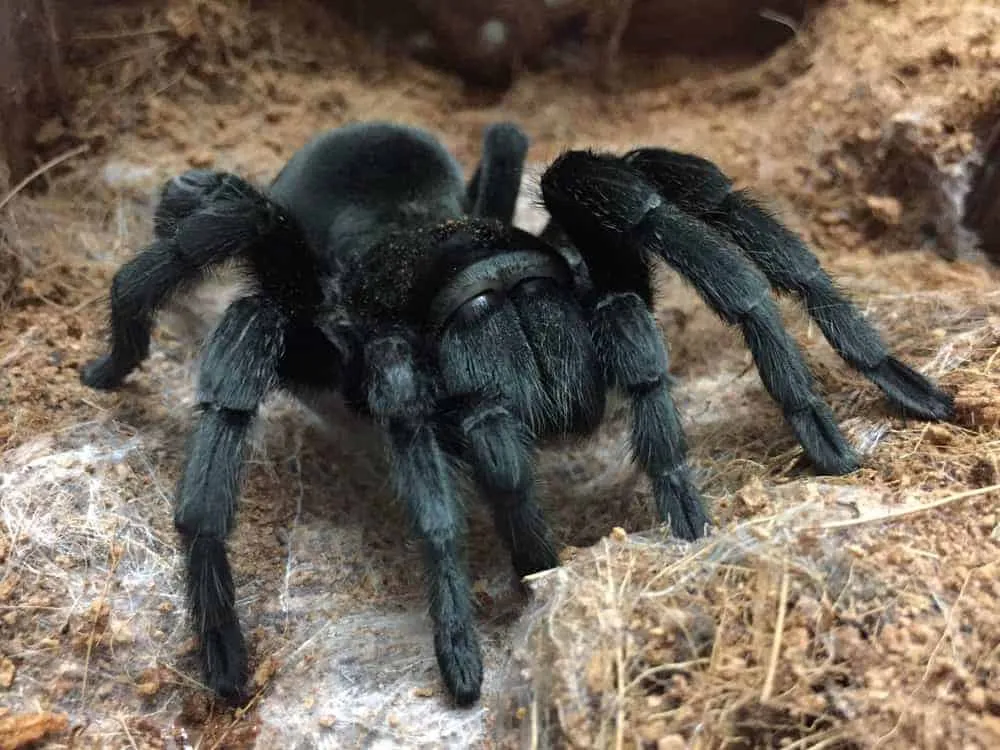
Size and Appearance
As the name suggests, the Brazilian Black Tarantula is known for its predominantly black coloration, which gives it a sleek and striking appearance. Adults typically have a leg span that can reach up to 6-7 inches (15-18 cm), making them a medium-sized tarantula compared to some of the larger species. Their bodies are covered in dense, velvety hairs, which contribute to their overall dark hue. The carapace (the upper shell of the cephalothorax) and legs are uniformly black, adding to the beauty of the spider. Their robust build and powerful legs reflect their terrestrial lifestyle, designed for both burrowing and hunting. The contrast of the black coloration against the backdrop of their environment also offers an effective camouflage mechanism.
Coloration
The Brazilian Black Tarantula’s coloration is a consistent, deep black across its entire body. While some individuals may exhibit very subtle variations in shade depending on factors such as age, diet, and molting cycle, the overall color remains remarkably consistent. This uniformity is a key characteristic that distinguishes it from other tarantula species. The black color serves as a form of camouflage, helping the tarantula blend into its environment and remain hidden from both predators and prey. The dark hue also helps in absorbing heat, which can be beneficial in its natural habitat. Overall, the Brazilian Black Tarantula’s coloration adds to its aesthetic appeal and makes it a visually stunning specimen for tarantula enthusiasts.
Behavior and Temperament
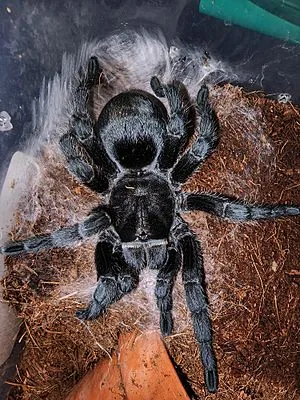
Defensive Mechanisms
The Brazilian Black Tarantula is generally known for its docile temperament, making it a good choice for beginners. However, like all tarantulas, it does possess defensive mechanisms. These spiders can flick urticating hairs from their abdomen when they feel threatened, which can cause skin irritation and discomfort if they come into contact with a person’s skin. Although they are not prone to biting, they may do so if provoked. Their bites are considered mild, but the large chelicerae can still cause some pain. Understanding these defense mechanisms is crucial for safe handling. Therefore, it’s always best to handle them carefully and avoid any unnecessary handling that could cause stress.
Feeding Habits
What Brazilian Black Tarantulas Eat
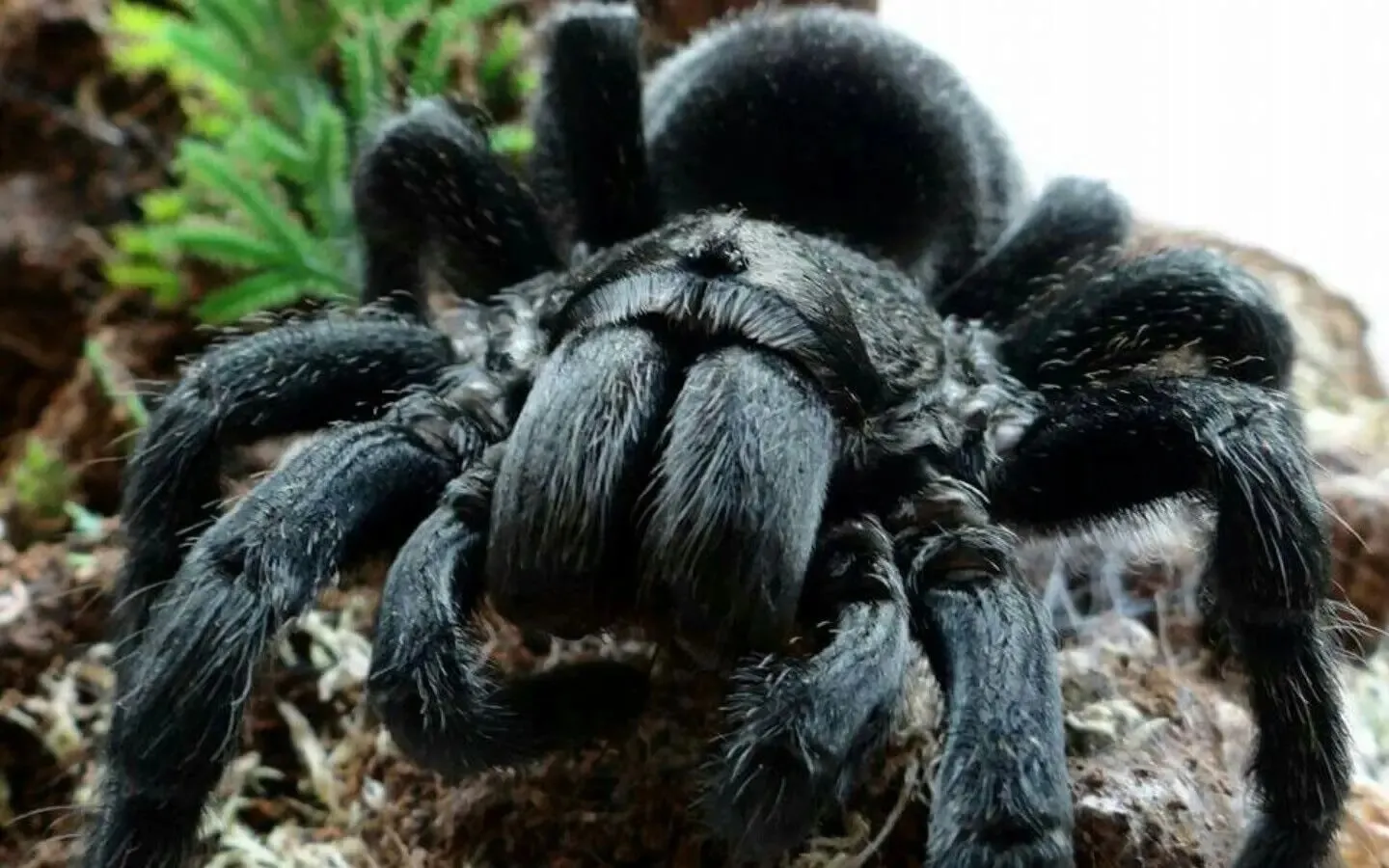
Brazilian Black Tarantulas are opportunistic predators that feed primarily on insects and other invertebrates. Their diet in the wild consists of crickets, grasshoppers, beetles, and occasionally small vertebrates. In captivity, they are typically fed a diet of commercially available insects such as crickets, roaches, and mealworms. The size of the prey should be appropriate for the tarantula’s size, with the general rule being that the prey should not be larger than the tarantula’s body. Feeding frequency depends on the age and size of the tarantula, with younger individuals needing more frequent meals. It’s essential to provide a varied diet to ensure the tarantula receives all the necessary nutrients for healthy growth and development. Fresh water should always be available.
Lifespan and Life Cycle
Molting Process
The Brazilian Black Tarantula has a typical lifespan for tarantulas, with females living significantly longer than males. Females can live for 15 to 20 years or even longer with proper care, while males typically live for only 3 to 5 years. One of the most fascinating aspects of a tarantula’s life cycle is the molting process. Molting is the process by which the tarantula sheds its exoskeleton to grow larger. During molting, the tarantula lies on its back, and its old exoskeleton splits open, allowing the spider to emerge with a new, larger one. The process is an extremely vulnerable time for the tarantula. After molting, the tarantula’s new exoskeleton is soft and requires time to harden, and it is also important to avoid handling the tarantula during this period.
Why the Brazilian Black Tarantula is Popular

The Brazilian Black Tarantula is popular for several reasons. Its striking appearance, with its all-black coloration, makes it visually appealing. Moreover, its docile temperament makes it relatively easy to handle and care for, which is attractive to both new and experienced tarantula keepers. They are also relatively hardy and adaptable to a range of conditions, which contributes to their suitability as pets. The fact that females have a long lifespan also adds to their appeal, allowing owners to enjoy their tarantulas for many years. The combination of these factors makes the Brazilian Black Tarantula a desirable choice for anyone interested in keeping tarantulas.
Care Requirements
Enclosure Setup
Setting up a proper enclosure is crucial for the well-being of a Brazilian Black Tarantula. The enclosure should be appropriately sized, with dimensions that allow the tarantula to move around comfortably. A good rule of thumb is to provide an enclosure that is at least three times the tarantula’s leg span in width. Substrate, such as a mix of coconut fiber, peat moss, and vermiculite, should be provided to create a natural environment for the tarantula. A hide, like a piece of cork bark or a commercially available hide, should also be included to allow the tarantula a place to retreat and feel secure. Ventilation is important to prevent the buildup of mold and maintain air quality. It is also important to make sure the enclosure is escape-proof.
Humidity and Temperature
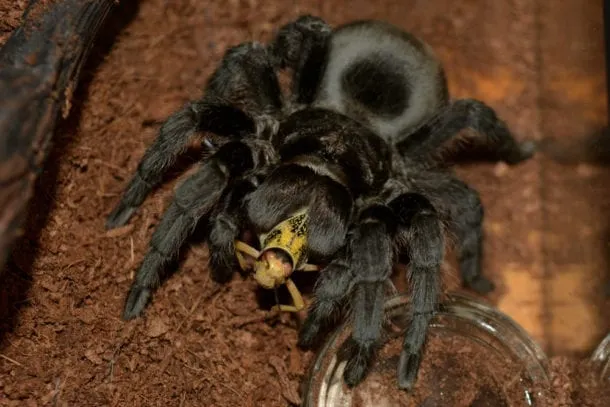
Maintaining the correct humidity and temperature levels is vital for the health of the Brazilian Black Tarantula. The ideal temperature range is between 75-85°F (24-29°C). This can usually be achieved with room temperature, but a heat mat or lamp might be necessary in cooler environments. Humidity levels should be kept between 60-70%, which can be achieved by misting the enclosure with water regularly, especially during molting. Accurate readings of both temperature and humidity should be monitored using a reliable thermometer and hygrometer. Maintaining these conditions will ensure that your tarantula is comfortable and able to thrive.
Diet and Feeding
Feeding a Brazilian Black Tarantula involves providing a balanced diet of insects. Crickets and roaches are common choices. The frequency of feeding depends on the age of the tarantula, with younger ones needing to eat more often than adults. It’s important to offer appropriately sized prey; the prey should ideally be no larger than the tarantula’s body. Any uneaten prey should be removed from the enclosure after a reasonable time to prevent stress on the tarantula. Always provide a shallow water dish with fresh water. A well-balanced diet combined with the right care requirements will keep your tarantula healthy and happy for many years to come.
